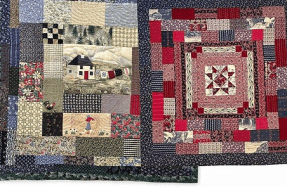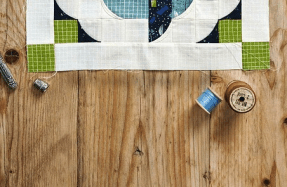

– Lin Clements
FOLK-ART STYLE
Originally, folk art was a rustic, handmade style of art that often depicted the maker’s life. Consequently, images included those from everyday life, such as flowers, leaves, animals, birds, insects, houses and farm life. Coupled with various geometric shapes, the range of subjects that can be used is as wide as you want to make it. The style of the motifs tends to be simplistic, often with rounded edges and quirky interpretations. Even a brief Web search for folk-art designs will show you that there is a wide range of motifs that can be used. However, certain favourites crop up time and time again.
Folk-art designs can be decorative or utilitarian and thus can be used in a variety of ways. For example, larger designs can be used on quilts, cushions and tablecloths; while smaller designs can decorate items such as bags, bookmarks and greetings cards.
The way the final design is to be used will affect how you design the work. For example, you might want a design that works as a medium-sized quilt block, or you might want a larger composite design for a quilt centre,




